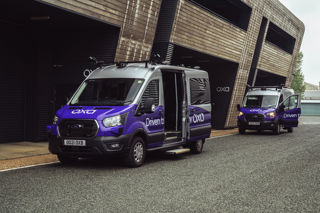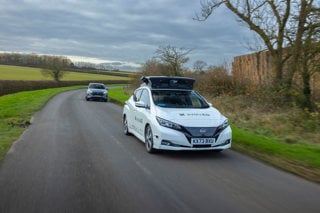The Gateway Project has started research into the public acceptance of, and attitudes towards, driverless vehicles.
The trials, which will see an autonomous vehicle driving in a complex urban environment, is not about robotising existing forms of transport, such as the car, but is examining ways to optimise mobility for the urban environment using new modes of transport enabled by automation.
In the latest phase of the GATEway Project (Greenwich Automated Transport Environment) a prototype shuttle will begin driverless navigation of a 2km route around the Greenwich Peninsula, using advanced sensors and autonomy software to detect and avoid obstacles whilst carrying members of the public participating in the research study.
The GATEway Project is led by TRL and funded by government and industry. It aims to demonstrate the use of automated vehicles for ‘last mile’ mobility, seamlessly connecting existing transport hubs with residential and commercial areas using a zero emission, low noise transport system.
Research findings from the project will guide the wider roll out of automated vehicle technology in all forms of surface transport, including cars, lorries and buses.
The focus of the study is not the technology but how it functions alongside people in a natural environment. This first trial will explore people’s pre-conceptions of driverless vehicles and barriers to acceptance through detailed interviews with participants before and after they ride in the shuttle.
The prototype shuttle, dubbed ‘Harry’ (in honour of navigation visionary John Harrison), uses an autonomy software system called Selenium, which enables real-time navigation, planning, and perception in dynamic environments.
Professor Nick Reed, academy director at TRL, said: “This research is another milestone in the UK’s journey towards driverless vehicles and a vital step towards delivering safer, cleaner and more effective transport in our cities.
“It is critical that the public are fully involved as these technologies become a reality.
“The GATEway Project is enabling us to discover how potential users of automated vehicles respond to them so that the anticipated benefits to mobility can be maximised.
“We see automated vehicles as a practical solution to delivering safe, clean, accessible and affordable last-mile mobility. I’m hugely proud of the work that has been undertaken in preparing for these tests and excited to move on to public testing.”
Developed by British companies Westfield Sportscars, Heathrow Enterprises and Oxbotica, the shuttle has no steering wheel or typical driver controls.
To navigate this complex real-world environment, the shuttle will use Oxbotica’s Selenium autonomy software, which is a vehicle-agnostic, sensor-agnostic autonomy solution for a wide range of platforms (e.g., low-speed shuttles to high-speed road vehicles).
The system uses onboard sensors, such as cameras and lasers, to locate itself in its map, perceive and track dynamic obstacles around it, and plan a safe obstacle-free trajectory to the goal. It does this without any reliance on GPS. High data-rate 3D laser range finders are used for obstacle detection and tracking, and an additional safety curtain is used for redundancy in order to maximise safety.
While the GATEway vehicle is designed to operate without a human driver, a safety steward will remain on-board at all times, complying with the UK’s code of practice on automated vehicle testing.
Philippa Oldham, head of manufacturing and transport at the Institution of Mechanical Engineers, said: “The benefits of driverless vehicle technology are huge as it could lead to fewer accidents. Statistics tell us that 95% of vehicle accidents are the result of human error so it makes sense to look at how we can use this new technology to help save lives.
“If we truly want the UK to become a world leader of driverless vehicle technology we need to get communities on-side and championing projects like this is a step in the right direction.
“We hope that this Greenwich project is the start of many more driverless trials around the UK and encourage the public to get involved.”
The GATEway Project builds on more than 50 years of research into automated vehicles by TRL and operates within the UK Smart Mobility Living Lab at Greenwich.
Fast emerging as a world-class test bed and real-world environment for the development and validation of new mobility solutions enabled by connected and automated vehicle technology, the UK Smart Mobility Living Lab in Greenwich is part of a long-term commitment led by TRL in partnership with Royal Borough of Greenwich to attract inward investment and create a compelling route to market for innovators.
The shuttle trial is one of a number of trials taking place as part of the GATEway Project to help understand the use, perception and acceptance of automated vehicles in the UK.
Others trials include automated urban deliveries, remote teleoperation demonstrations, exploring how automated vehicle systems work for people with additional travel needs, and high-fidelity simulator tests to investigate how drivers of regular vehicles respond and adapt their behaviour to the presence of automated vehicles on the roads.
GATEway is one of three projects awarded by Innovate UK under its competition entitled ‘Introducing driverless cars to UK roads’.
The other two projects are UK Autodrive in Coventry and Milton Keynes, and Venturer in Bristol.






















Login to comment
Comments
No comments have been made yet.